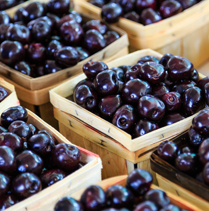
When your toddler is constipated, potty training and going number two can seem like a part-time job. Here are simple ways to get your kid pooping!
Toddlers have a way of letting you know when they are constipated. In fact, the symptoms are not unlike those for an adult. Maintaining an awareness of how your toddler’s body is responding to the foods they are eating, the type of stools they are having, and their symptoms can help you problem solve and find solutions.
Signs and Symptoms to Look For
- gassiness
- stomach aches
- passing very hard or dry stools
- painful stools
- changes in frequency (decreases in a normal pattern)
See our free, Scoop on Poop Guide to understand what normal poop looks like and help keep kids regular. Become familiar with your child’s individual pattern and note changes in it. Parents are often concerned only with frequency, but what is normal for one child may be different for another. As long as the stools are large and soft and the child is comfortable before and after passing them, the frequency is less important.
Home Remedies
Toddlers get constipated for the same reasons as adults: too little fiber and water in the diet and lack of physical activity. Potty training can also add to anxiety. Here are a few things you can try at home to ease your child’s discomfort:
Add fiber to your child’s diet.
Buy cereals, bread and crackers with more than 3g of fiber per serving. Add fruits and vegetables daily such as prunes, apricots, plums, peas, peaches, pears, beans, and broccoli.
Try limiting dairy to 3 small servings per day.
Chronic constipation can be a sign of a cow’s milk intolerance or allergy. If you suspect this discuss it with your pediatrician prior to making any diet changes.
Increase fluids.
Water is best. Natural food laxatives include diluted prune or apple juice (limit to 4 ounces per day). Another natural alternative is flaxseed, either ground seeds or oil, also a good source of omega 3 fatty acids. This can be found in your local health food store. 1 teaspoon per day of ground seeds or oil should be effective. Offer it plain or mix with pureed fruit or vegetable mixtures to mask the taste. Encourage daily active movement and play through crawling, walking, running and jumping. Toddlers need at least 1 hour per day of active play; time at the playground, dancing, racing or riding a bike. Tip: teach your child to slither like a snake, it puts pressure on the belly and acts like a mini-massage to help loosen stools.
Don’t make pooping a pressure.
Wait to potty train until your child shows clear signs of being ready. If your child is anxious or fearful, constipation may get worse.
Ask your doctor questions.
Check with your doctor to see whether it’s okay or necessary to use an over-the-counter stool softener or glycerin suppository. Always check with your doctor before resorting to this type of treatment.
Address key factors first.
Changes in diet, fluid intake and activity level should be your first line of defense.
For tips for older babies and toddlers, please see Constipation & Your New Baby.












